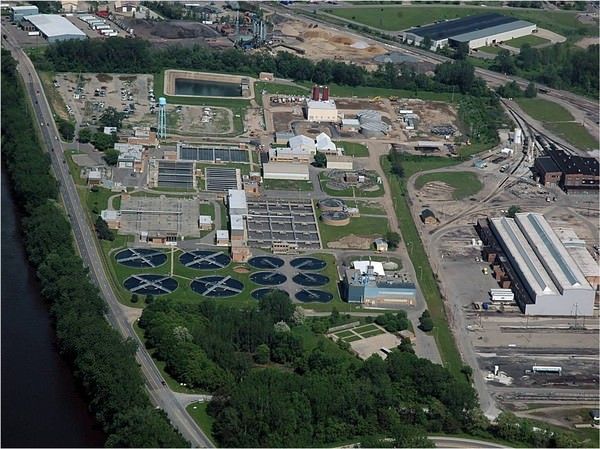Michigan is Cracking Down on PFAS in Wastewater Plants
Published on by Water Network Research, Official research team of The Water Network in Government
Michigan regulators are cracking down on municipal sewage plants in a bid to curb the amount of per- and polyfluoroalkyl substances called PFAS or PFCs passing through wastewater facilities into landfills and waterways that feed the Great Lakes.
The Michigan Department of Environmental Quality wants sewage plants that treat industrial wastewater to find out which customers are using the robust class of toxic fluorochemicals that are polluting drinking water supplies around the state.

Undated aerial photo of the Grand Rapids wastewater treatment plant along the Grand River. (City of Grand Rapids), Via: Michigan Live
Each of the 70-some plants around Michigan treating industrial wastewater have until late June to find PFAS users among their customer base and develop a plan to monitor for the chemicals before submitting a final report in October.
Notices went to wastewater plant operators in late February.
"We suspect that platers may be a main source," said Carla Davidson, an environmental quality analyst in the DEQ Water Resources Division's Upper Peninsula office.
Division leaders say the scrutiny on industrial wastewater started last year in Lapeer, where PFAS in the sewage plant discharge was traced to Lapeer Plating and Plastics, an automotive supplier that uses PFAS chemicals in decorative chrome finishing.
The discovery prompted a new Flint River fish consumption advisory.
According to state documents obtained through the Freedom of Information Act, the Lapeer Wastewater Treatment Plant effluent tested between 440- and 2,000-parts per trillion (ppt) for PFOS in samples taken in May, June and August 2017.
Those results are between 36 and 166 times Michigan's enforceable limit of 12-ppt for PFOS in state rivers, lakes and streams.
Read full article: Michigan Live
Media
Taxonomy
- Pollutants
- Water Pollution
- Wastewater Phycoremediation
- Industrial Wastewater Treatment
- Wastewater Treatment
- Pollution
- Wastewater Treatment Plant Design
- Pollution